The Amalfi Coast is the most scenic travel destination in Italy. This 50-kilometer section of southern Italy’s coastline is the stuff postcards are made of. The Amalfi Coast is everything you imagine Italy to be: romantic, dramatic, and beautiful. From here, the mighty Amalfi Republic once started its maritime conquest. Centuries later, the region became a huge travel attraction. The Amalfi Coast attracts over 5 million tourists annually, a staggering number for such a compact region. Positano and Amalfi bear the weight of the visitors, while the calmer towns provide refuge. The SS163 Amalfi Coast road is famously scenic – and famously terrifying. Narrow, winding, and crowded, it’s not for the faint of heart. The coast’s steep terrain is both a challenge and a gift. Villages cascade down the cliffs like living sculptures. Under the Mediterranean heat, the sea below shimmers like spilled ink and has a wildly blue color. The entire Amalfi Coast was designated a UNESCO World Heritage Site in 1997 – reason enough for us to visit all 13 towns, going from west to east.
POSITANO
If you’re coming from Naples or Sorrento, Positano is the first major town you encounter along the famous SS163 Amalfi Drive. It sits on the western edge of the Amalfi Coast, about 37 kilometers from Naples and not far from Sorrento. It’s undoubtedly the most famous and iconic town on the Amalfi Coast, and its fame comes from its sheer aesthetic appeal. The town’s reputation for luxury, glamour, and cinematic beauty makes it a bucket-list destination for travelers worldwide. Positano wasn’t always a glamorous hotspot.
It was part of the powerful Amalfi Republic during the Middle Ages. But like many coastal towns, it faced pirate raids, which led to the construction of defensive watchtowers that still can be seen on the coast today. By the 20th century, Positano transformed. Artists, writers, and celebrities discovered its charm. John Steinbeck wrote about it in 1953, and called it “a dream place.” His essay catapulted Positano to international fame, and it hasn’t looked back since.
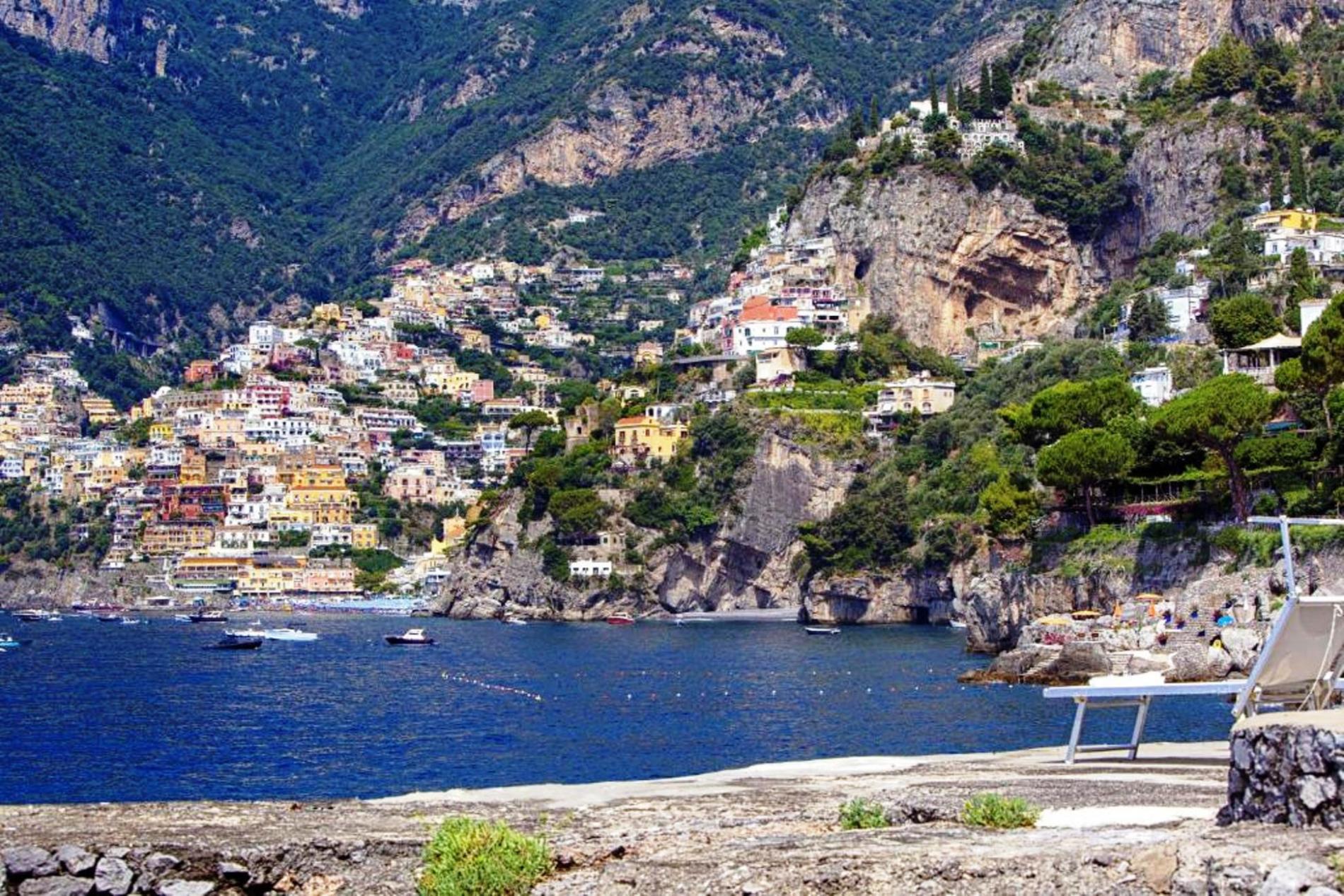
Today, Positano is a tourism juggernaut. It’s the most visited town on the Amalfi Coast. Unlike quieter neighbors like Praiano or Ravello, Positano is synonymous with glamour. The beach, Spiaggia Grande, is a pebble-strewn crescent that feels like the heart of Positano. The Tyrrhenian Sea stretches endlessly beyond it, a shimmering blue that makes the town feel like it’s floating on water. But this popularity comes at a price. During peak season, the town is bursting at the seams. The narrow streets are clogged with tourists, and finding a spot on Spiaggia Grande feels like winning the lottery. Shopping here is an experience. You’ll find all kinds of handcrafted leather sandals and flowing linen dresses. Just be prepared to pay luxury prices.
Once you’re in Positano, walking is the only way to get around. Positano’s layout means everything is either uphill or downhill. Narrow, winding alleys and staircases are an unforgettable experience. The pastel-colored houses aren’t random. Local regulations require them to be painted in specific shades to maintain Positano’s iconic look. While the influx of visitors keeps the economy thriving, it also makes everyday life for residents challenging. The cost of living is high, and the streets are rarely quiet. Compared to other Amalfi Coast towns, Positano is the showstopper. Amalfi may be historic, and Ravello may have better views, but Positano is everyone’s darling.
PRAIANO
The nearby village of Praiano is a great alternative to Positano if you want to avoid the crowds. Located only a fifteen-minute drive away, the peaceful charm and local flavor of Praiano, a tiny fishing community, are sometimes difficult to find along Amalfi Coast’s well-beaten path. Geographically, Praiano is split into two main areas: Vettica Maggiore, which faces Positano, and Praiano proper, overlooking the sea toward Amalfi. Vettica Maggiore is home to the Church of San Gennaro. This 16th-century church is known for its serene piazza with a view of the sea and its eye-catching dome covered in majolica tiles.
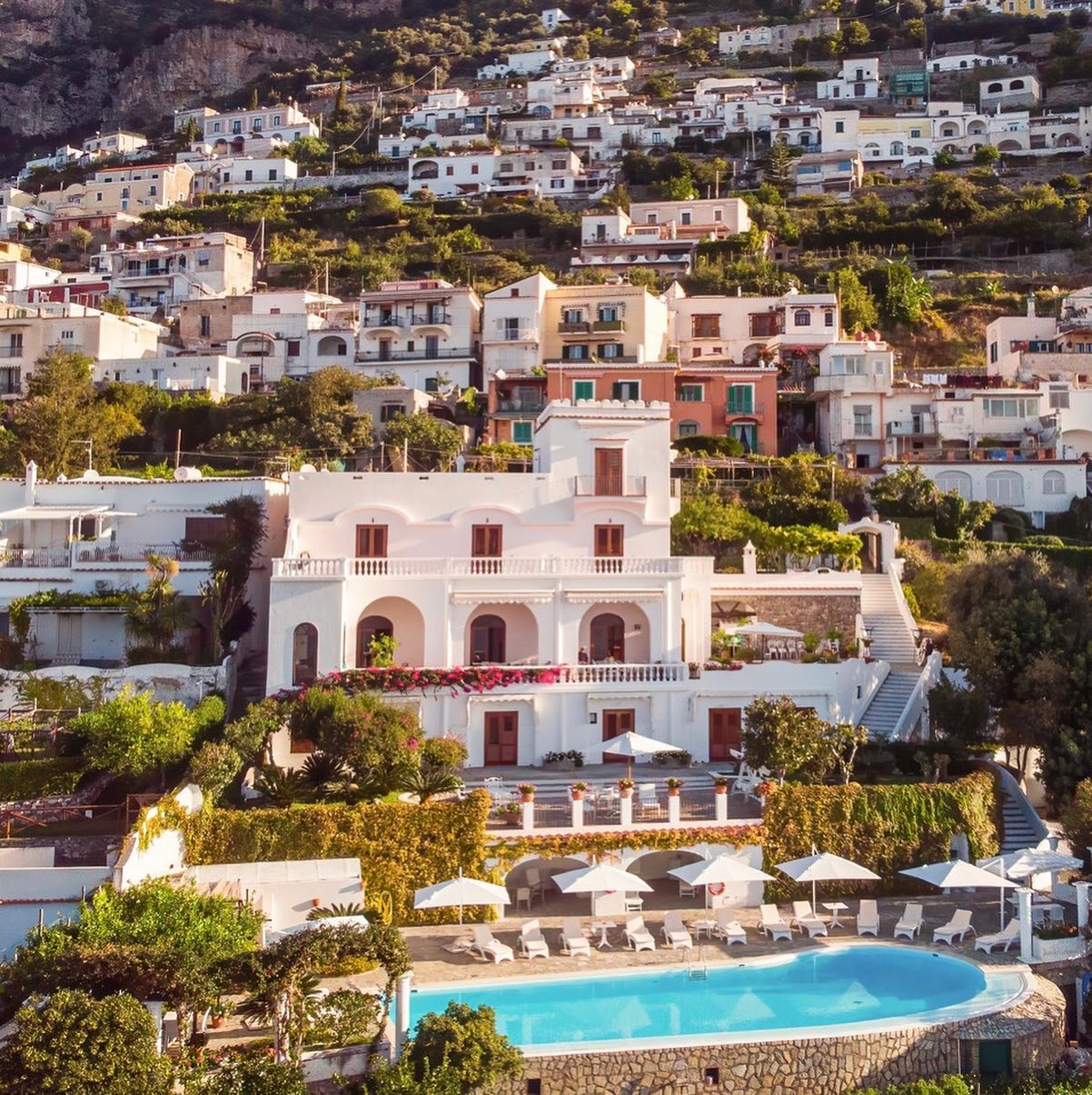
There are only small walkways between the houses, barely wide enough for a donkey, and no cars or true roads except from the one large road that runs down the coast, just like in Positano. Although it is possible to drive to the town, parking is quite limited. Therefore, the best option is to arrive to Marina di Praiano by boat, or to take a bus or scooter. The village has a little “beach” underneath it. It is accessible by descending roughly 400 steps on a concrete stairway.
The beaches around here are mostly just flat concrete slabs on the rocks, with a steep staircase that takes you back up to the real world. For newlyweds, families, and lone tourists seeking a more genuine Amalfi experience, Praiano looks ideal.
FURORE
Unlike other villages along the Amalfi Coast, Furore is truly unique. It’s quieter, smaller, and more niche. It is not centered on a busy piazza or hanging down cliffs. Rather, it hides. Set high above the ocean, this peaceful community has a stunning secret:a fjord straight out of a fairytale book.
Fiordo di Furore is a narrow inlet were the sea cuts into the cliffs. A small beach and blue Mediterranean waves are framed by sheer granite walls that rise on either side. A 30-meter-high bridge crosses the gap above it all, and provides one of the most recognizable views of the Amalfi Coast. The Amalfi Drive, built in the nineteenth century, was intended to connect the cities of the Amalfi Coast.
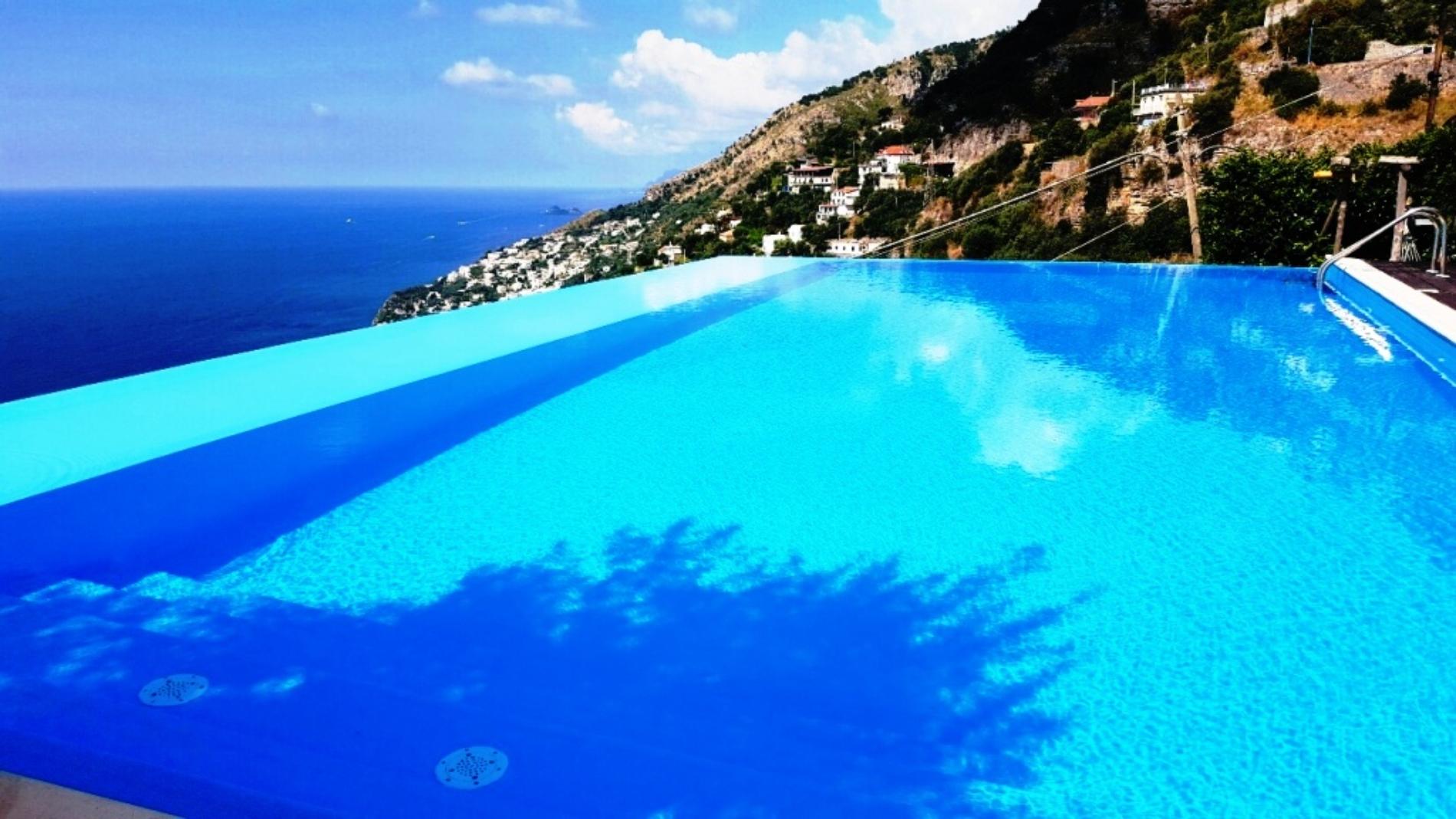
The bridge over Furore’s fjord was an important part of this complex project. But the view from the bridge above the fjord is not the only reason it is famous. It’s a popular cliff diving destination, and it hosts the annual Mar Meeting cliff diving championship since 1990. Divers from all over the world jump from the bridge into the crystal-clear waters below. The height of 30 meters adds an element of danger that makes each dive a spectacle. The little, quiet beach at the base of the fjord, is accessible via a steep staircase or by boat.
CONCA DEI MARINI
If you accept the hairpin turns that curve up and down a hill to arrive to Conca dei Marini, you’ll find it to be a charming area. The village’s shape, a seaside valley filled with little white houses, gives it its name. It may have been established by the Tyrrhenians under the name Cossa. Conca dei Marini is undoubtedly an idyllic spot, but what exactly is there to do there? Not a lot, to be honest, but enough for a single day of exploration. Visitors come here to escape. To relax.
To enjoy the scenery without the crowds. One of the most remarkable Saracen towers on the Amalfi Coast is the Tower of Silence, also known as the White Tower. Originally constructed as a cemetery in the sixth century, the White Tower provides an amazing view, particularly when viewed from the sea. Conca dei Marini has a population of around 700 residents, and is one of the smallest towns on the Amalfi Coast.
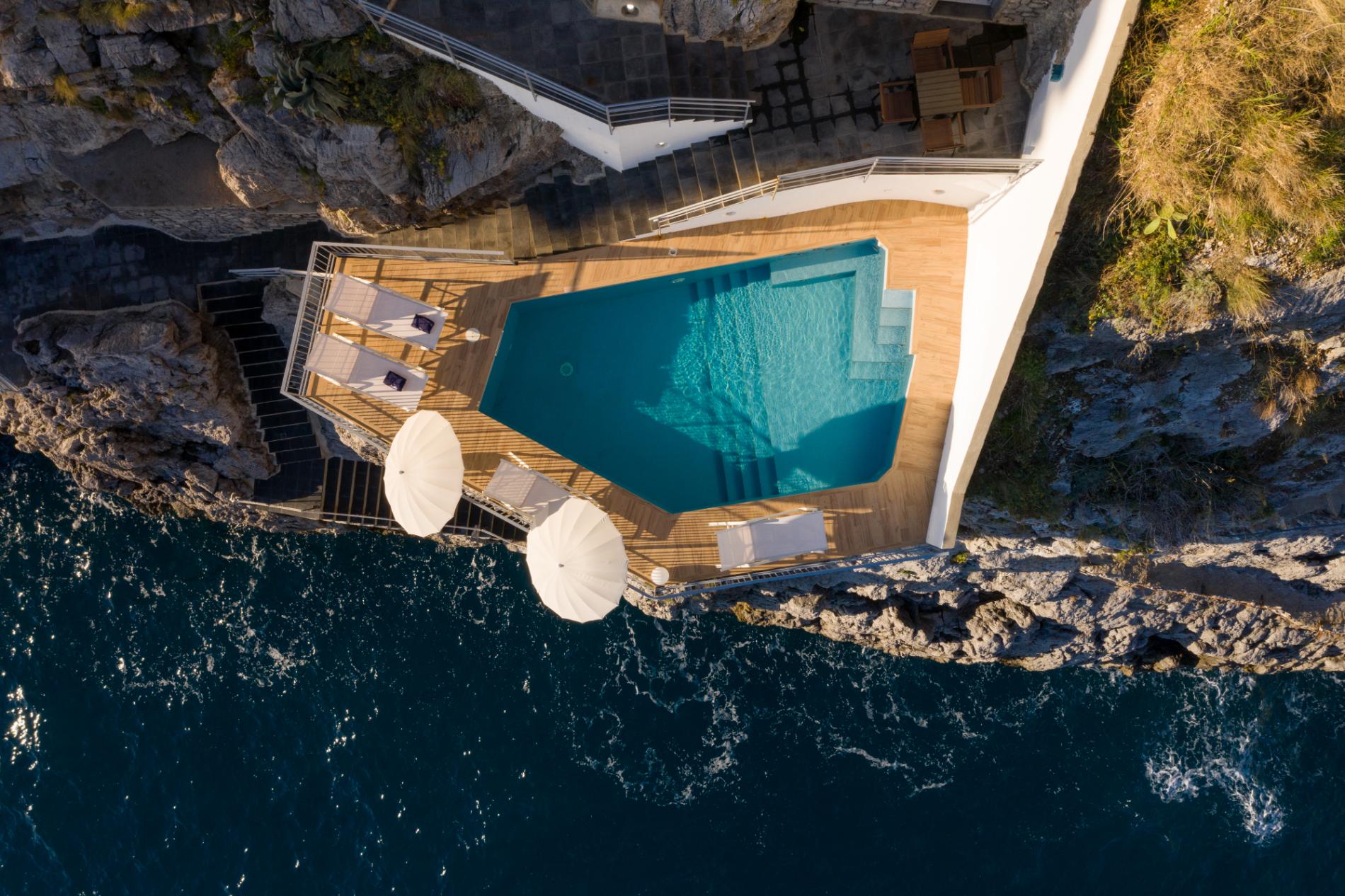
There is a tiny marina with fishing boats and shimmering waters at sea level. Sitting on terraces above, the village is surrounded by Mediterranean scrub, lemon groves, and olive trees. The two are connected by staircases and narrow walkways. The stunning Emerald Grotto, with its emerald tints reflecting off the underwater rocks, is accessible by lift or stairs.
AMALFI
Amalfi is one of the busiest towns on the coast, second only to Positano in popularity. Its history is larger than life. Along with Venice, Genoa, and Pisa, it was one of the four major maritime republics of medieval Italy. Amalfi, which was known for its shipbuilding and navigation, dominated Mediterranean trade in the tenth and eleventh centuries. Did you know that the Amalfi Republic even created one of the first maritime laws, the Amalfi Tables? For centuries, this legal system influenced marine activities and regulated trade. But Amalfi’s glory didn’t last forever.
Numerous natural catastrophes, like the disastrous tsunami in 1343, destroyed a large portion of its port and reduced its strength. Amalfi became a sleepy fishing village by the Renaissance, a long way from its heyday. Today, Amalfi welcomes over 2 million visitors annually. The town may feel overrun with tourists in the summer, especially near the waterfront and in the Piazza del Duomo. The crown jewel of Amalfi is the Cathedral of Saint Andrew. It stands atop an imposing stairway that draws notice right away, and dominates the Piazza del Duomo.
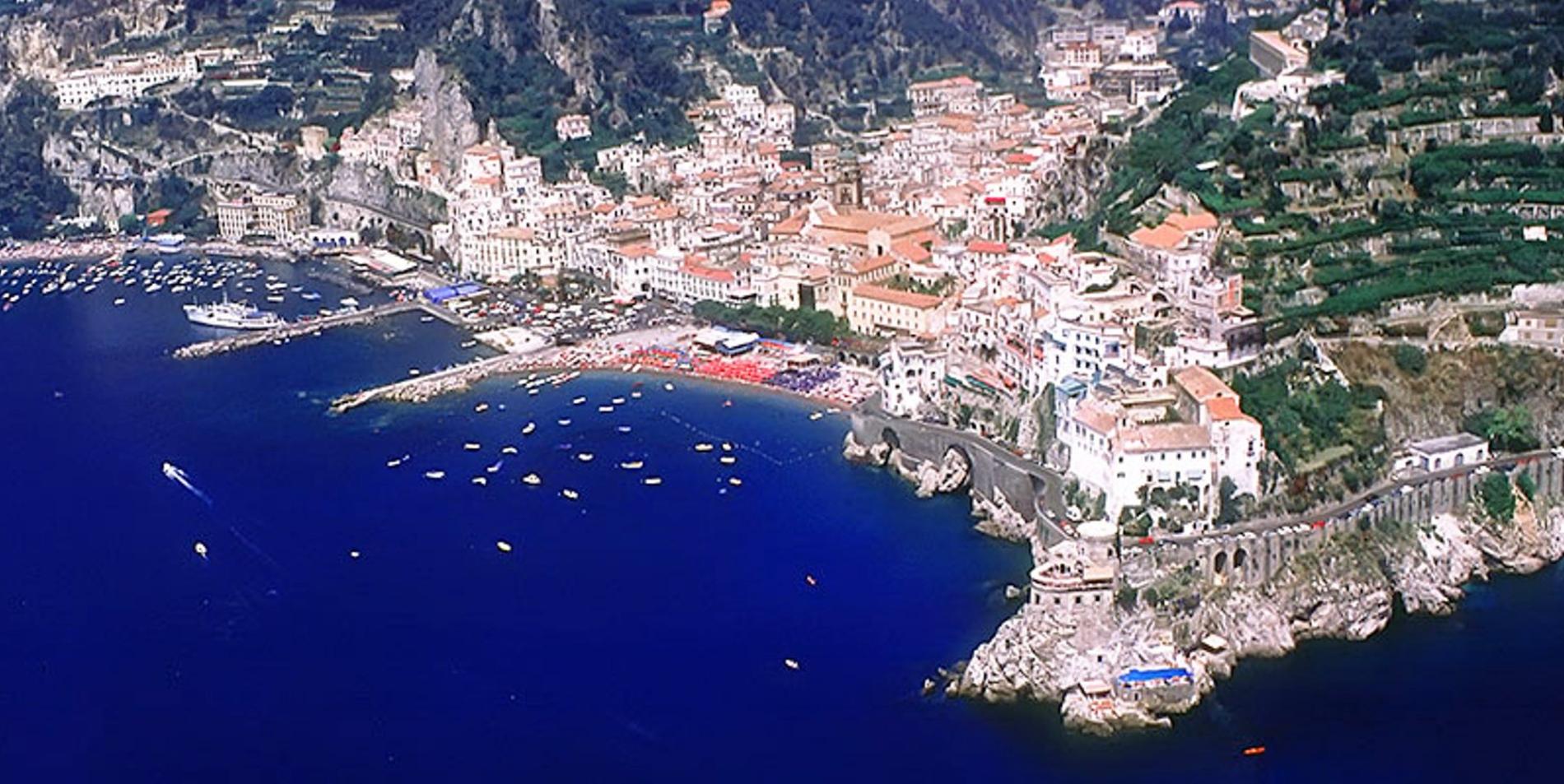
The cathedral was built in the 9th century and has been changed many times over the years. These changes created a unique mix of architectural styles. It is dedicated to Saint Andrew, whose relics were brought to Amalfi from Constantinople in 1208. The striped façade was inspired by Arab-Norman design. Its bronze doors, also imported from Constantinople in 1066, are some of the oldest in Italy. Amalfi’s streets are narrow and full of surprises. They reflect the town’s medieval origins, designed more for pedestrians than for modern vehicles.
The main street – Via Lorenzo d’Amalfi – is the town’s central artery. It leads from the harbor to the Piazza del Duomo. The Valle dei Mulini creates a natural amphitheater in which Amalfi stands. The town had easy access to the sea and an advantageous position that was safe from invaders. The town’s buildings are stacked in tiers as it ascends the cliffs. Valle delle Ferriere, a valley near Amalfi, has uncommon vegetation and a peaceful waterfall.
Traveling to Amalfi is difficult due to crowded buses and a lack of parking. The majority of tourists choose shuttle services or ferries. Due to increased tourism, Amalfi is now more expensive for both lodging and dining. That makes it less affordable for tourists on a tight budget.
ATRANI
Atrani feels almost like an extension of its larger, more famous neighbor, Amalfi, because of how close they are. Less than a kilometer separates the two towns. They are connected geographically and historically. When Amalfi was a strong maritime republic, its elite lived in the quieter residential area, today known as Atrani. The two towns are connected by a 10-minute pedestrian walkway.
Despite being so close to Amalfi, Atrani has managed to avoid the same level of tourist crowds. Agriculture and fishing, not tourism, were the main drivers of Atrani’s economy for many years. The town was not intended to serve tourists. Due in large part to the rise of independent travelers and the impact of social media, Atrani started to garner greater notice in the 2000s.
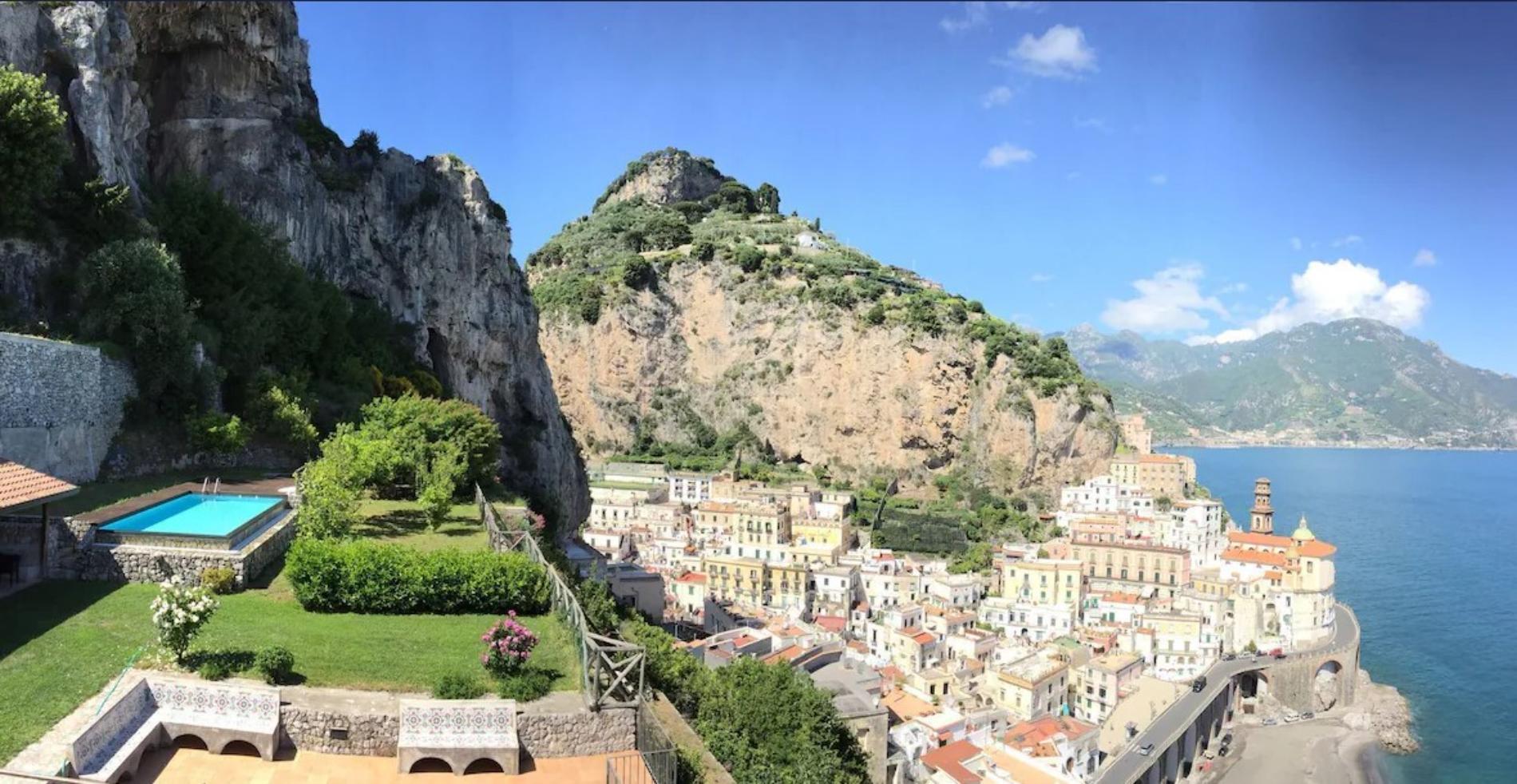
Atrani’s history is surprisingly significant for such a little town. Amalfi’s doges were crowned here back in the Middle Ages. These ceremonies took place at the Church of San Salvatore de Birecto. Atrani is cradled between the steep cliffs and the sea. It’s small. So small, in fact, that it’s the smallest town in Italy by area. The center of the town is Piazza Umberto I. Although it’s little, it has everything you need: a fountain, a few cafés, and some locals enjoying espresso.
The beach is right at the town’s doorstep, separated from the main square by a single road. The main attraction here is Collegiata di Santa Maria Maddalena. This 13th century church is a standout. Its beautiful white and yellow façade is visible from almost anywhere in Atrani.
The simplicity of Atrani is what makes it so appealing. It lacks luxury shops and imposing monuments. Rather, it provides peaceful beaches and streets that seem to have been unchanged for generations.
RAVELLO
Ravello sits about 365 meters above sea level, high in the Lattari Mountains. It’s not a coastal town, technically speaking, it’s a cliffside hideaway. This elevation gives Ravello some of the best views on the Amalfi Coast. They don’t call it the “Terrace of Infinity” for nothing. Unlike Amalfi or Positano, which are crammed into valleys or perched on cliffs, Ravello feels much more open. There’s space to breathe. Ravello has always had an air of sophistication.
During the Middle Ages, it thrived as a prosperous trading center within the Duchy of Amalfi. Wealthy merchants built grand villas and palaces to display their success. The town was also known for producing wool and fine textiles, which were exported throughout the Mediterranean. By the 13th century, Ravello’s prosperity began to decline alongside Amalfi’s diminishing power. But its beauty didn’t go unnoticed.
In the 19th century, European aristocrats and artists arrived here to find some inspiration. Richard Wagner came. Gore Vidal lived here. Even Greta Garbo hid out here when she wanted to disappear. Today, Ravello stands out as one of Amalfi Coast’s most refined destinations.
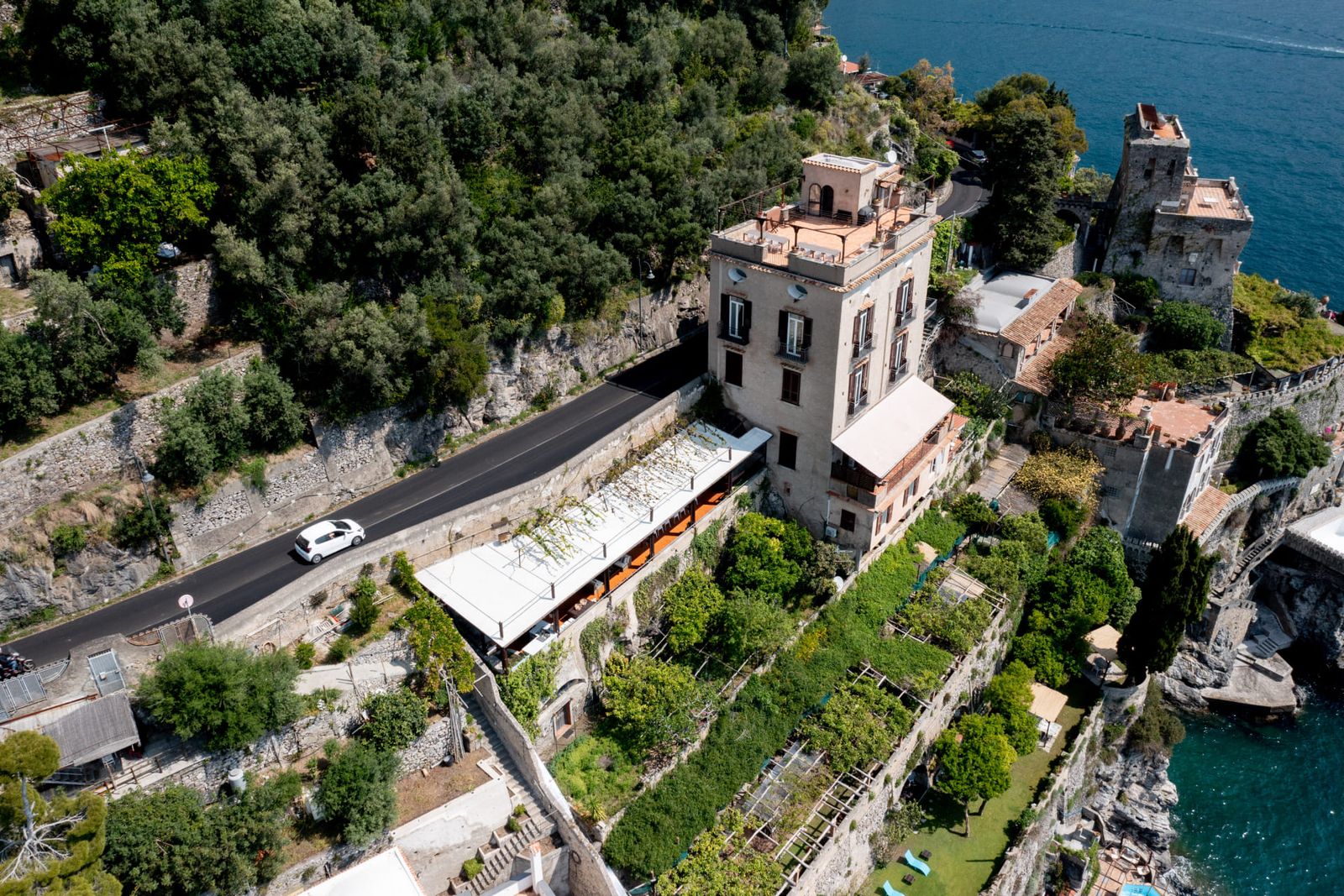
Unlike Positano or Amalfi, it avoids overwhelming crowds. However, it’s far from overlooked. With about a million visits a year, it is a contender. Considering that the town has fewer than 2,500 residents, these figures are remarkable. Its appeal lies in its peaceful, sophisticated atmosphere. People come here to enjoy classical concerts in the evening and garden walks at sunset.
Villa Rufolo is a masterpiece of Moorish-inspired architecture that was constructed in the 13th century by a prosperous merchant family. Its sea-facing gardens, filled with colorful blooms, are legendary. When Wagner came here, he was so moved that he composed parts of Parsifal. The 11th-century Duomo di Ravello was constructed in honor of Saint Pantaleone. As a reminder of Ravello’s wealthy past, the bronze doors are located inside the cathedral.
SCALA
Scala is the oldest town on the Amalfi Coast. But should it be on your radar? Not really. You’re probably not coming to the Amalfi Coast to study medieval fortifications or learn about a Benedictine monk who founded the Knights of Malta. Scala doesn’t cater to the tourist fantasy. It’s quiet, almost too quiet. Peaceful, almost too peaceful. And unless you’re specifically looking for isolation, it might just leave you underwhelmed. Scala sits high in the hills, across the valley from Ravello.
At 400 meters above sea level, it looks down at the coastline. The terrain gives the impression of a mountain retreat rather than a seaside resort. There are small hamlets, thick greenery, and layered landscapes. The lack of public transport options and parking makes Scala feel even more disconnected. The town is for hikers, or people who just want to avoid the crowds. But if you’re someone who thrives on energy and excitement, you’ll be bored here.
MINORI
Minori fits snugly between Maiori and Ravello. It’s one of the smallest towns along the Amalfi Coast, yet its location is superb. Unlike several hilltop communities, Minori is at sea level. This means you’ll have a proper beach. Not a big one, but enough to remind you that you’re on the Amalfi Coast. The Lattari Mountains rise in the distance. It’s not as dramatic as the cliffside chaos in Positano, but that’s the point. Minori is casual, accessible, and simple to navigate.
The name Minori likely originates from its relationship to Maiori, its larger neighboring town. In Latin, minori means “smaller,” while maiori means “larger”. Rich Romans built villas here in the first century AD as a way to get away from the heat and mayhem of the empire. The Villa Romana is one of those villas that is still standing today. Tourists are not drawn to Minori. And for that very reason, some individuals love it. For those who like the Amalfi Coast without the drama, Minori is the place to go. But you shouldn’t mistake “low-key” for boring. Foodies will find paradise at Minori. Its strong culinary legacy has earned it its nickname, “City of Taste.” It’s a travel destination for everyone who is passionate about Italian cuisine.
The restaurants serve delicacies, such as scialatielli al limone and handmade pastries. Minori has a local vibe. You’ll see grandmothers talk to each other in doorways, children play football in the piazza, and fisherman unload their haul. Minori’s beach isn’t massive, but it’s clean and inviting. The town’s main church is dedicated to Saint Trofimena, the town’s patron saint. Legend has it her relics were miraculously found on Minori’s beach. You can get to Minori from Ravello by walking down a safe and signed path, downhill for 20 minutes. It’s one of the most scenic and rewarding hiking paths on the Amalfi Coast.
MAIORI
With its 5,500 residents, Maiori is one of the larger towns on the Amalfi Coast. The town stands on a rare piece of flat land. This flat terrain offers practical benefits. It makes room for wider streets, a big promenade, and a sandy beach, all of which are uncommon on the coast. A devastating flood destroyed much of Maiori’s historic town on October 25th, 1954. Heavy rains triggered landslides and flash flooding, overwhelming the town and causing destruction on an unprecedented scale. Over 300 buildings were destroyed, and more than 100 people lost their lives.
The town’s layout is more modern than that of its neighbors as a result of the rebuilding effort. Now, it’s a mix of the old and the new. It makes up for its lack of Amalfi’s or Ravello’s medieval charm with accessibility and functionality. Tourism peaks during the summer months, and over half a million people travel to Maiori, including day-trippers. The Santa Maria a Mare church is Maiori’s most iconic landmark. Its tiled dome is visible from nearly anywhere in town. The castle of San Nicola de Thoro-Plano is a medieval stronghold that overlooks the town.
It’s a bit of a climb to get there, but the scenery and historical significance are worth it. Torre Normanna is a historical watchtower that today houses a fine dining restaurant. Maiori’s promenade runs alongside its sandy beach. Maiori has the longest beach along the Amalfi Coast. It’s sandy, large, and family-friendly, with numerous beach clubs and free areas. Maiori is bordered by terraced lemon groves which produce Sfusato Amalfitano, the region’s most valuable lemon variety.
ERCHIE
Erchie sits in a small bay between Cetara and Maiori, just off the iconic Amalfi Drive. Legend has it that Erchie was founded by Benedictine monks who built a monastery here dedicated to Santa Maria Assunta. It’s small, only a few streets and houses, but surrounded by green hills and terraced lemon gardens. The beach is the centerpiece of the village. Compared to other Amalfi Coast beaches, it is far less crowded, sandy, and family-friendly. The tiny population of 100 people gives the village an intimate, almost private feel. Most of the houses are clustered around the beach, and life here revolves around the sea. Who comes to Erchie? Mostly Italians. Many visitors are locals from nearby towns or families spending a quiet day at the beach. International tourists rarely make it here. That keeps the atmosphere relaxed and authentic.
CETARA
If you’re staying in nearby Cetara or Maiori, you can hike to Erchie along scenic coastal paths. Just 2 kilometers east of Erchie, you’ll stumble upon Cetara. Like most Amalfi Coast towns, it is built into the cliffs. Cetara’s history is inseparable from the sea. The name is most likely derived from the Latin word “Cetaria,” which means “tuna fishing nets”. It reflects the area’s long history of fishing. Over the centuries, the town has maintained a relationship to fishing, specializing in tuna and anchovy production, a legacy that continues to this day.
The main church, Chiesa di San Pietro Apostolo, is a modest yet beautiful example of local religious architecture. Torre di Cetara, an old medieval tower intended to protect against pirate raids, watches over the town. Cetara’s harbor feels real and unpretentious. Early morning is the best time to see the fishermen in action. So, is there much to do in Cetara? Not really. But sometimes, doing less is exactly what you need. In Cetara, life slows down, the food takes center stage, and the simple joys of coastal living shine through.
VIETRI SUR MARE
Vietri sul Mare is the official starting point of the Amalfi Coast, if you’re arriving from Salerno. This is your first taste of the coastline, and what a taste it is! The town sits right at the eastern edge of the Amalfi Coast, just 3 kilometers from Salerno. It has a more accessible, and less claustrophobic feel. The ceramics industry in Vietri sul Mare, which has existed since at least the 15th century, is an integral part of the city’s history. The town’s wealth of clay and its favorable location for trade made it a center for pottery production. Historically, Vietri was more of a working-class town, focused on agriculture, fishing, and pottery. While other Amalfi Coast towns were building grand cathedrals and maritime fleets, Vietri was quietly mastering its craft.
The town is known as the “Capital of Ceramics”. As you walk through its streets, you will come across countless stores selling hand-painted tiles and vases. The 17th-century Church of San Giovanni Battista, with its green-and-yellow tiled dome, is Vietri’s most recognizable building. The town’s main beach is more functional than attractive. Vietri is compact and walkable. Once you’re there, you won’t need any transport to explore the town itself. What’s your favorite town on the Amalfi Coast? Leave a comment and let us know. if you enjoyed this video, hit the like button and subscribe to World Travel Guide.
For the Luxury Villas Amalfi Coast just check at the link.

